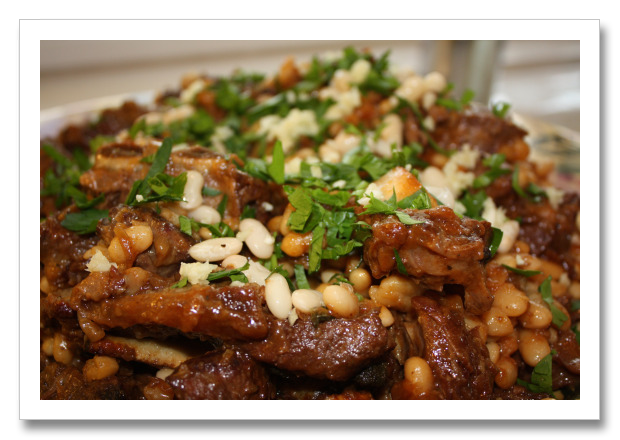
Oh yes, yummy this was. When we got to our second home in the desert last week, after eating out for more than a week, I was looking forward to making a home cooked meal. I enjoy glancing through the cookbooks I keep there since they don’t get as much use as the ones at home, and some of them I’ve not explored very much. As I looked through Marcella Hazan’s book, Marcella’s Italian Kitchen, this recipe talked to me. Lamb shoulder, onions, braised, baked, combined with cannellini beans with some pungent raw garlic and chopped parsley on top. Yep. Sounded like a winner, and it was.
We visited Bristol Farms (an upscale market that has a great meat department, with great expensive prices for everything on their shelves). But I wanted good, meaty lamb shoulder and I wasn’t even sure any of the supermarkets would HAVE lamb shoulder. Anyway, I made the cannellini beans myself rather than use canned. No reason why, just that I had time to do them, and I prefer the texture of homemade simmered beans rather than the almost mushy canned ones.
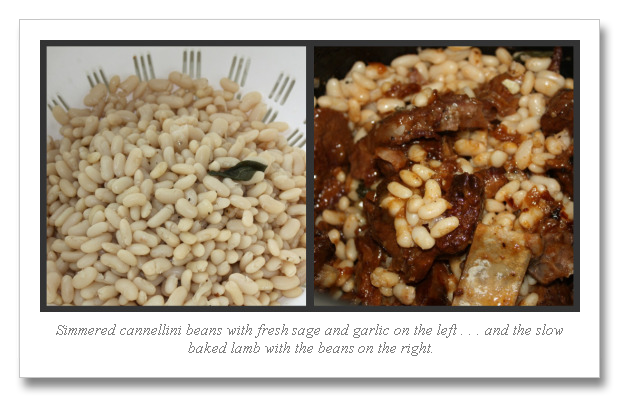
The recipe is relatively simple, really. The lamb pieces are floured and browned in vegetable oil, then set aside. A generous amount of thinly sliced onions are sautéed, then you add some white wine and beef broth, with tomato paste and fresh sage. That’s about it. The cannellini beans were made separately, with some garlic and fresh sage added to the water. Then, in Marcella’s recipe she said adding the raw minced garlic as a garnish is an important element – not cooked garlic – but the raw stuff. Gives it some bite. You can, if you study the photo at the top, see a few little snips of garlic. I saved a few of the cannellini beans out to add to the top of the finished dish – just because I wanted a bit more contrast in the photo. The mixed-in beans you’ll notice are darker with the extra-tasty sauce. Don’t skimp on the salt – the beans require a good measure of it. Do taste the finished dish and perhaps sprinkle a bit of salt all over the top. Delicious, all of it.
printer-friendly PDF
Braised Lamb Stew with Cannellini Beans
Recipe By: Adapted from Marcella’s Italian Kitchen
Serving Size: 6 (not huge portions)
1 tablespoon vegetable oil
3 pounds lamb shoulder, bone-in, cut in 3-inch pieces
2/3 cup all-purpose flour
3 tablespoons extra virgin olive oil
2 1/2 cups onions, sliced thin
6 fresh sage leaves (or 1 tsp dried)
Salt and pepper to taste
1 cup dry white wine
2 teaspoons tomato paste
1 cup beef broth, (use a concentrate with water)
1 1/2 cups cannellini beans, dry
4 cups water
2 whole garlic cloves, sliced in half
3 fresh sage leaves
Salt and pepper to taste
Garnish for meat:
2 teaspoons fresh garlic, finely minced
3 tablespoons Italian parsley, chopped
1. Pour enough vegetable oil into a skillet to cover the bottom completely and turn on the heat to medium high.
2. When the oil is hot, dredge the lamb pieces in the flour, one by one, and add gently to the pan. Do not crowd the pieces. Brown the meat on all sides, then transfer the to a plate, adding more lamb pieces, until all the lamb has been browned. Pour off the grease but keep the fond that’s on the bottom – add that to the stew once it’s mixed and ready to go in the oven.
3. Preheat oven to 350°.
4. Choose a large, lidded pot (large enough to hold all the meat and the beans), and preferably one that can go from oven to rangetop. Into this large pot add the olive oil, sliced onions, and sage. Turn heat to medium and cook onions, uncovered, stirring occasionally, until it becomes a light brown (but not burned).
5. Add the meat, turning it 2-3 times and heat until the meat begins to sizzle, then add salt, some grindings of ground black pepper and the white wine.
6. Meanwhile, dissolve the tomato paste in the beef broth and set aside. Simmer at medium-high heat the onions and wine and when almost all of the wine has boiled off, add the beef broth mixture and the fond from the frying pan. Bring back to a simmer, then cover and place the pot in the oven for 1 1/2 hours, removing it every 30 minutes and stirring it.
7. Meanwhile, prepare the beans: Add the beans to a stockpot, add water to cover and bring to a boil, turn off heat and let sit for an hour. Drain beans, then add twice as much water as you have beans (I’ve estimated at 4 cups, but it might be more). Add the garlic cloves and sage leaves. Bring to a boil, cover and reduce to a low simmer for about an hour, until the beans are just barely cooked through. Don’t over cook them or they’ll be mushy.
8. Drain the beans and taste for seasoning (salt and pepper). You’ll find these need more salt than you think. Pour the beans into the lamb stew pot and gently stir. Cover and bake another 15 minutes, until the mixture is warmed through. Remove any of the bones that have loosened completely and discard.
9. Pour the stew out onto (or into) a large heated platter or bowl and sprinkle top with the raw garlic and the chopped parsley.
A year ago: Chewy-Crispy Choc Chip Cookies
Two years ago: Pork Tenderloin with Figs & Port Wine






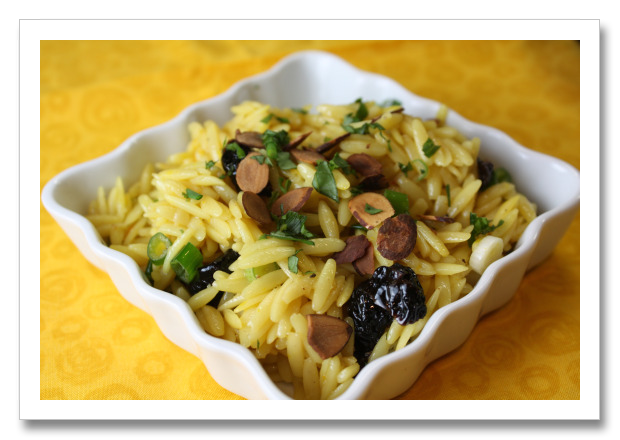
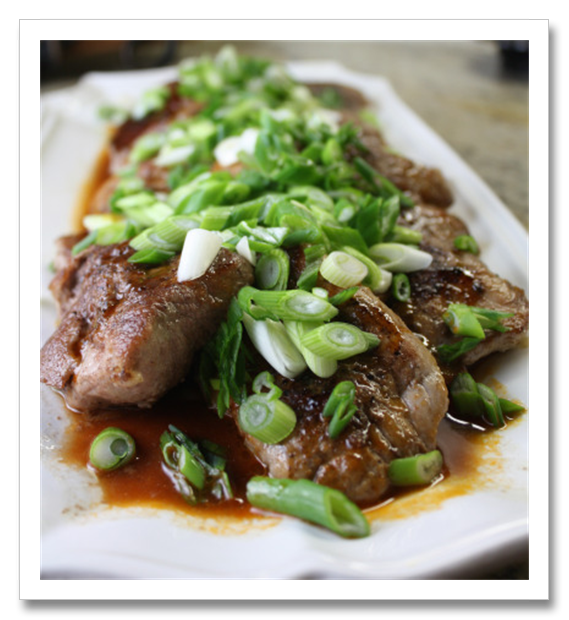
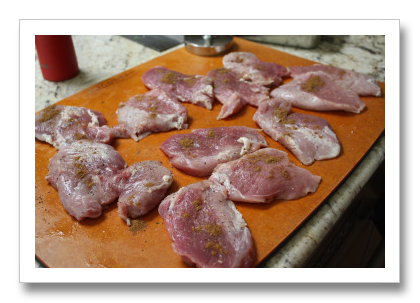



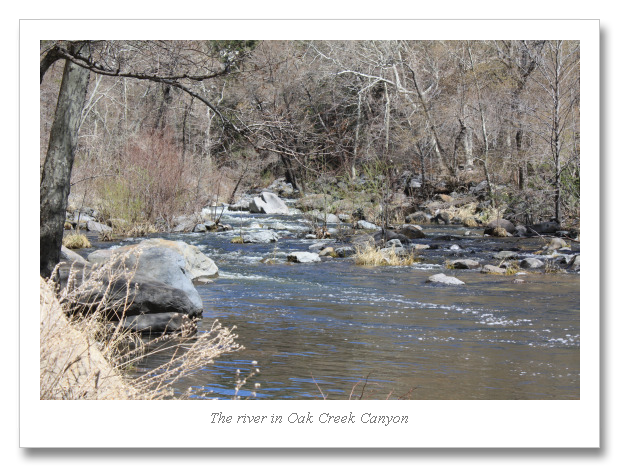
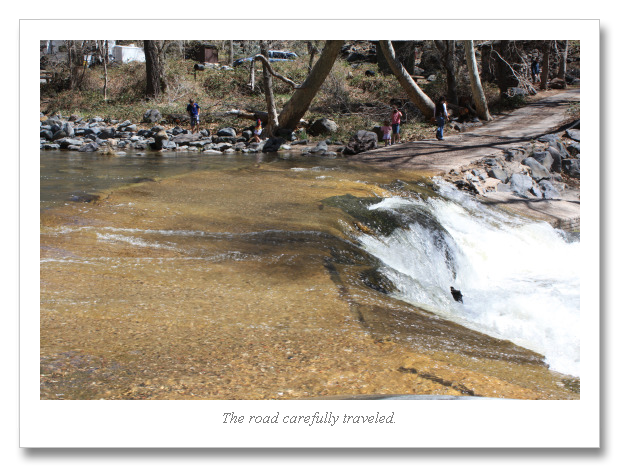
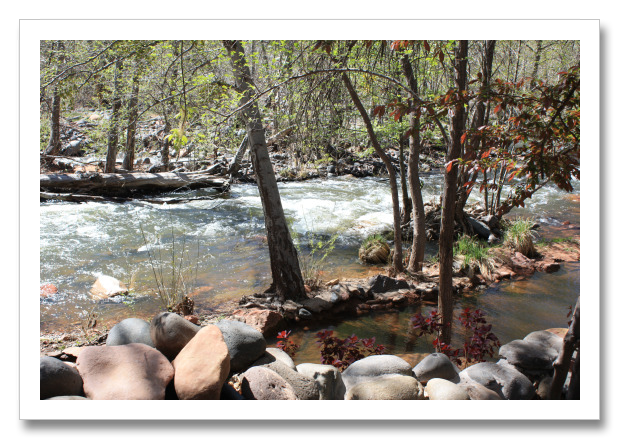






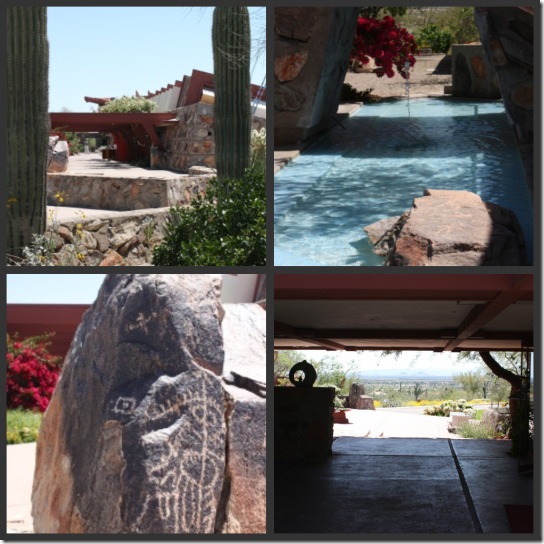
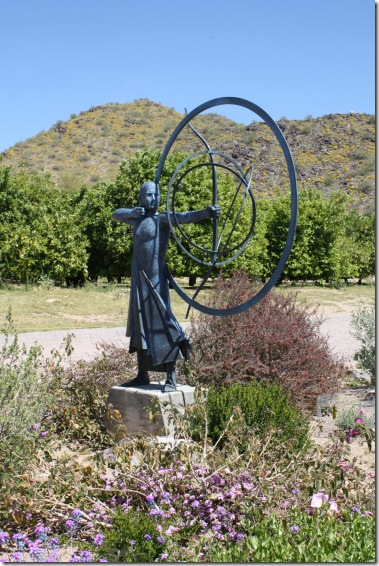
Leave a Comment!